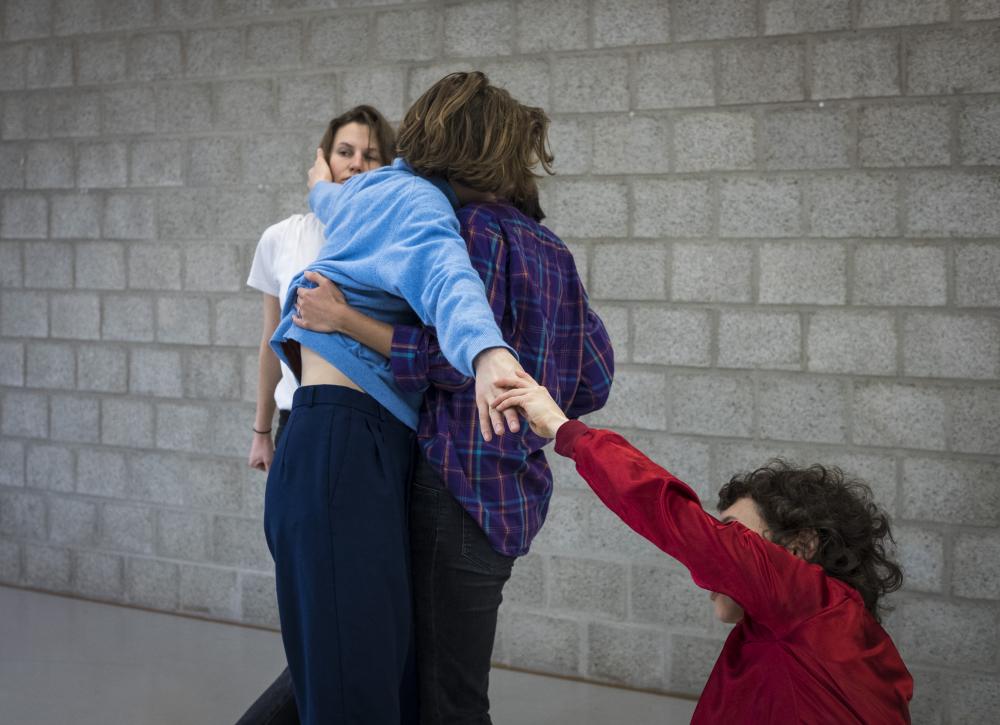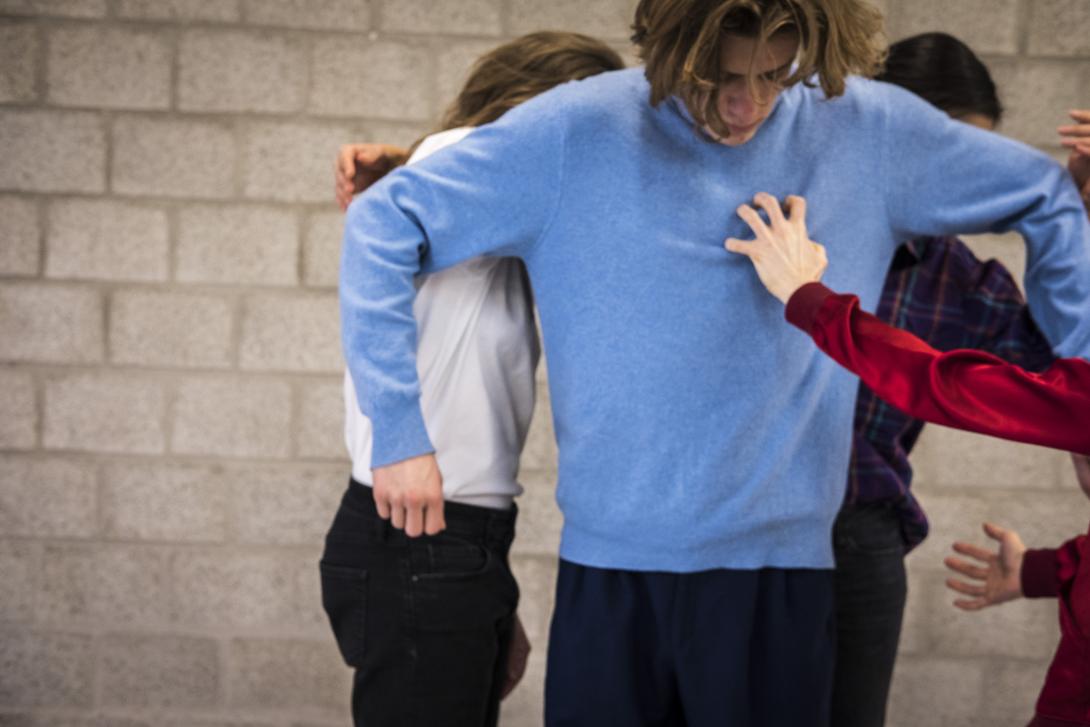‘The ballad of trial and error’
Interview with Femke Gyselinck & Hendrik Lasure by Tom Zonderman (BRUZZ, 30/09/2020)
We already knew that the music of Bob Dylan can be danced, thanks to Lisbeth Gruwez. Choreographer and dancer Femke Gyselinck, together with jazz pianist Hendrik Lasure, tests whether his female counterpart Joni Mitchell can also be translated into physical expression. But that's not all: Gyselinck, Lasure and the dancers Bryana Fritz and Sue Yeon Youn use the iconic Canadian singer song writer, painter and poet as the starting point for a choreography and new music – a ballad, because the performance is not just called Moving ballads. It became a multi-layered piece that explores the relationship between pop music and contemporary dance, lyrics and lyricism, representation and imagination, choreography and improvisation. In which the musician dances and the dancers make music, and vice versa. In which movements and words suddenly take on a completely different meaning. Entirely according to the well-known Mitchellian saying: ‘I'm fluid, you know, everything I am I'm not.’
Also in Flamer, the performance in which you courted your drummer brother Lander Jennifer Lopez, you played with those roles, Femke. Lander put on his dancing shoes, you took over the drumsticks.
FEMKE GYSELINCK: I'm very interested in the non-virtuose. I like tripping, falling, sloppiness, and that's what I find in an untrained body. With Flamer it was absolutely not the intention to surpass each other, but just to find a world in which our language is equal. In Moving ballads I play the piano, and every time I have to concentrate super hard in order not to sink through the ground. That is digging very deep into all my amateurish love of music. But I find the fragility it contains super interesting.
HENDRIK LASURE: The working title of Moving ballads was Seeking comfort in an uncomfortable chair. That says a lot, I think. We do something, and just as it almost gets comfortable, we wriggle into something else.
How (un)trained is your dancing body, Hendrik?
LASURE: Actually, I always wanted to be a dancer, at the ballet of the children show Samson & Gert. (Laughs) But I didn't dare register for the ballet school. Maybe that's a missed opportunity. That's why I saw Moving ballads as a challenge, to deal more directly with the audience. When I play music, I just sit on my island. But I felt that one day I had to confront those watching people, and this is the moment.
Lander and Hendrik both come from jazz. Are jazz musicians good dancers, Femke?
GYSELINCK: With musicians who like to improvise, I notice a willingness to approach time and space in a new way every time. Lander and Hendrik have both been able to translate that philosophy into movement. Hendrik is really a super good dancer, better than some trained dancers.
You are dancing to a composition by Hendrik, which he based on the work of Joni Mitchell. You call her the artistic infusion of Moving ballads. What did you borrow from her?
GYSELINCK: How her lyrics are both super personal and universal, how she invented her own guitar style, how she challenged herself time and again in a new genre... That's really unbelievable. But what really captivated me was the book Joni Mitchell: in her own words, in which the Canadian journalist and musician Malka Marom had conversations with her over a period of thirty years. I was impressed by how she speaks about herself and her art. How, as she says herself, she is everything she is not. I tried to translate that idea of the fluid that I read in her oeuvre into movement. How, for example, a fist expresses the idea of a winner, but can also immediately turn into something aggressive. Contemporary dance can sometimes become too abstract, I like to play with the boundary where movements have both an aesthetic purpose and are recognisable. I want them to 'speak'.
Do we, therefore, get to see four interpretations of the same composition?
GYSELINCK: I don't like the idea that a movement or a gesture is absolute. Just as words can be interpreted in different ways, you can read movements differently every time. That's my dramaturgical answer to the world we live in today, in which I think it's important that each individual can have their own voice or their own interpretation of a certain content. Does that sound rather heavy? (Laughs)
How did you translate that heaviness into music, Hendrik?
LASURE: I knew a few of Joni Mitchell's albums pretty well, but I started listening to everything again in chronological order. Living with an album for two weeks at a time, I also had a year and a half for it. In the meantime, I created a kind of sound palette on the computer, very intuitively. Then, Femke and I wrote a text together with Wannes Gyselinck, who took care of the dramaturgy of the piece, the backbone so to speak. Around this structure, I came up with four variants of the same piece of music, so that each performance of the ballad has a different atmosphere. Every dancer has their own 'soundtrack'.
GYSELINCK: The text we have written consists almost entirely of quotes by Joni Mitchell. That's how you give a message, but I also wanted it to include abstract words, phrases like 'Oh my'. Laying that puzzle was the most difficult part for me. And then, of course, to sing that text. We are no singers. (Laughs) 'Articulate!', Wannes shouted in rehearsals, even with Hendrik.
LASURE: With my group Warm Bad I do sing, but I don't consider myself a singer.
GYSELINCK: I saw Hendrik at work for the first time in a performance by Hof van Eede, the theatre company of Wannes. I was impressed by the fragility he put in his singing.
About her album Blue, Joni Mitchell said that she had never felt so fragile and naked. Is that also the crux of Moving Ballads?
LASURE: That's certainly a feeling I have, only not like her for a sad reason.
GYSELINCK: There are stubbornness and combativeness in it at the same time. I'm very small and thin, but at times I also have to hit and have an impact. Think of it as a desperate search for hope. That, in combination with fragility, failure and false singing. (Laughs)

